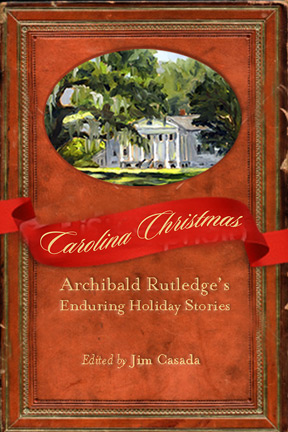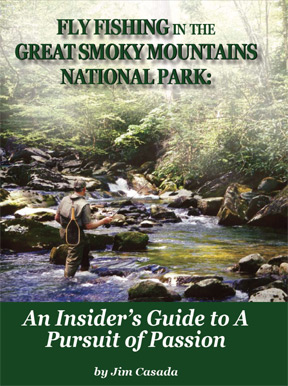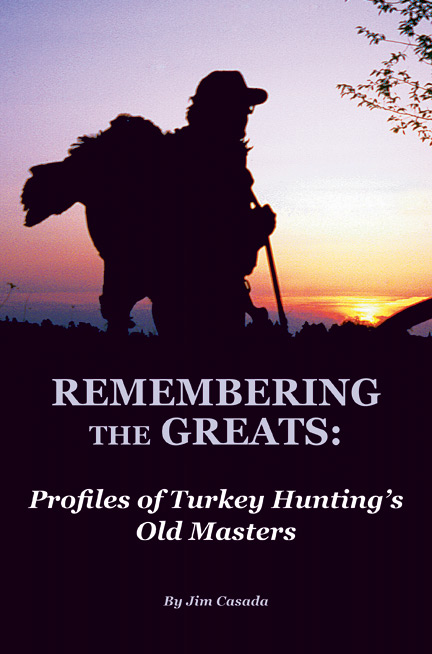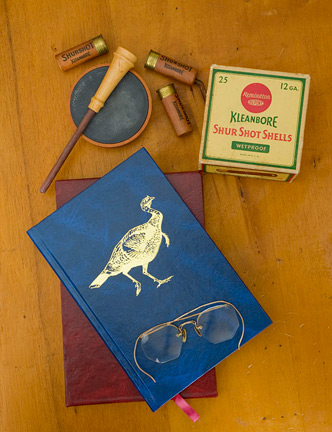December 2016 Newsletter
Click here to view this newsletter in a .pdf with a white background for easy printing.
Maybe it’s because I’ve always been an avid reader, or perhaps it’s thanks to a bit of selfishness since I write books, but I’m of the staunch opinion that books make great Christmas gifts. One of my most memorable early Yuletide gifts was a copy of Zane Grey’s Spirit of the Border my parents gave me when I was 10 or 11, and it still holds a special place in my mind AND in my personal library. Books are a gift that can keep on giving, year after year, as the recipient plucks them from the shelf, reads and re-reads them, and maybe looks fondly back to the circumstances connected with the gift. With that in mind I’m going to offer Christmas specials on several of my books, and in one or two cases they are works I have never previously included in specials. Here are the offerings, and in every case I’ll pay the postage so the savings is more than just the reduction in the price of the book. Since it’s the Christmas season, I’ll start with a book which features Yuletide, Carolina Christmas: Archibald Rutledge’s Enduring Holiday Stories. This work, one of five Rutledge collections I’ve edited and compiled over the years, includes his classic tales of Christmas hunts and celebrations at Old Flintlock’s beloved “home by the river,” Hampton Plantation, together with a concluding section of recipes for favorite foods of the season which he so often mentioned. The recipes aren’t his—they were developed by my wife (mostly) and me, but they are for his favorite Christmas dishes. The book is normally $30 Plus $5 shipping, and I’m offering it for $25 postage paid.
Remembering the Greats: Profiles of Turkey Hunting’s Old Masters, $30
The Literature of Turkey Hunting: An Annotated Bibliography and Random Scribblings from a Sporting Bibliophile. Hardbound in a slipcase with gold embossing, Skivertex binding, and other attributes of a high-quality book. Limited, numbered, and signed edition of 750 copies. $50 (list $90). Yet another book that won awards, and it is a must for any serious collector of the sport’s literature.
PLACE YOUR
ORDERS TODAY
Jim Casada Outdoors Jim’s Doings Other than consuming a fine feast at my daughter’s home on Thanksgiving (I contributed pumpkin pie and it passed muster), not a lot of note has happened in the last month. A piece I wrote on Hiram Wilburn, a devoted “saver of history” who went to extraordinary lengths to preserve artifacts connected with the mountain way of life when the Great Smoky Mountains National Park was created, is in the current issue of Smoky Mountain Living. Similarly, I have an article on Archibald Rutledge’s thoughts on deer hunting in the current Charleston Mercury Magazine. I’ve been up to the Smokies three times in as many weeks for a talk, book signing, and abortive plan to meet with the new superintendent of the Park, Cassius Cash. That meeting, which was to discuss issues of concern to the Southern Forest Watch, which I serve as unpaid Executive Director, was canceled at the last minute because of the devastating fires in the area. On that trip I was able, with plenty of assistance from my brother, Don, to put in place a grave marker for old “Aunt Mag,” the wonderful black lady who was a boyhood friend and about whom I’ve written here in the past. I’m excited to be chosen to write the introduction for a new printing of an extremely rare book on the Smokies, Sam Hunnicutt’s Twenty Years Hunting and Fishing in the Great Smokies, and I’ve been in touch with family members on that project. Old Sam, who was quite an interesting fellow, will be the subject of a chapter in my book, “Profiles in Mountain Character.” Other current projects include periodic writing on a biography of Archibald Rutledge, and I just finished a story for Outdoor Life magazine related to the future of the wild turkey and turkey hunting. Other projects underway at present include a profile of a grand African-American friend, Beulah Suddereth, and several magazine assignments. Add to that a bit of time devoted daily to trying to organize my study a bit better (talk about “Mission Impossible”) and that’s about it. This time of the year puts my nostalgia nodes into overdrive mode, so most of what follows involves fond memories of Yuletides past, with activities from my boyhood looming large. I most certainly didn’t grow up with a silver spoon in my mouth. In fact, I now know, although I didn’t realize it as a youngster, that as a family we were somewhere in the ranks of lower middle class. We were a lot closer to being poor than being rich, but there was always food on the table and clothing on our backs, never mind that ready cash or much in the way of luxuries was out of the picture. The fact that virtually everyone we knew lived in similar circumstances blinded me to a considerable degree, and it wasn’t until I headed off to college that I genuinely realized the yawning gap between the circumstances not just of our family but our community and some folks living outside the mountains. Economic circumstances aside, mine was in most ways a magical boyhood—hunting for small game virtually at the doorstep, trout streams within easy walking distance and fishing for warm water species even closer by, the opportunity to roam free pretty much as I pleased, a paucity of posted signs, vast stretches of national forest and national park within walking distance, and parents who not only understood but actively encouraged a small boy’s love of the outdoors. I was blessed, and in a way far beyond what can be measured by bottom lines or dollar signs. My youth was also far more privileged than that of either of my parents. My mother lost her mother when she was an infant, and all the days of her youth involved constant moving from one place to another; a surrogate mother who, while a family member, could have used a much bigger dose of love and compassion; and precious little in the way of material things. To her eternal credit, Mom made up for a youth hallmarked by deprivation with an adulthood characterized by giving, an incredible ability to find joy in the simplest of things, and a devotion to the well being of her three children that I now realize was truly exceptional. Daddy’s youth was similarly straitened, although he had least had an intact nuclear family and a bunch of siblings around him (though two died as children). Of material things, however, there was precious little beyond the bare essentials. Daddy was never as demonstrative as Mom, but when it came to hard work, instilling a work ethic in his offspring, and a deep-rooted belief in the importance of education, he took second place to no one. It says a great deal about him when I reveal that he helped put two of his sisters through college (he didn’t marry until he was 32 years of age and was to a considerable degree the family bread winner from the age of 20 or so) before seeing all of his offspring get college degrees and, in two cases, advanced degrees. This came from a boyhood where material things were almost non-existent, and I know of no better way to illustrate things than through sharing one of his most meaningful tales of that boyhood. I’ve shared portions of this story before, but here it is in a more polished form as it appeared in Smoky Mountain Living last December. Incidentally, the story has been recognized by writing awards from two different organizations. If you reach the end and still don’t understand why I’m so incredibly fond of pocket knives, then the conclusion that you have never had anything close to a meaningful acquaintance with this quintessential tool is inescapable. Christmas Heartbreak In December of 1916, hard times held the high country of the Smokies in a stranglehold. The Lusitania rested at the bottom of the Atlantic, our traditional allies in Europe were stalemated on the Western Front, and visionaries realized America’s entry into World War I was in the offing. But the little boy living on the headwaters of Juneywhank Branch in the remote fastness of the Smokies was blissfully unaware of ominous world affairs. Nor did he fully appreciate the near-desperate financial straits of his large family. His father, while a willing worker, found jobs providing cash money elusive and transitory. Cutting acid wood, gathering chestnuts by the bushel for sale, digging a few ginseng roots, and seasonal gallacking (gathering galax leaves for holiday decorations) were about the only types of endeavors where money changed hands. Almost everything else was on a barter system. Such matters were beyond the lad’s ken, but with Christmas approaching he did have a consuming desire for a single gift. Throughout spring, summer, and fall his father had periodically let him use what mountain men considered the ultimate tool--a pocket knife. His apprenticeship with the knife involved practical matters such as cutting up seed potatoes for planting and whittling wooden pegs to hold barn doors in place, but there had also been pleasures such as shaping a dogwood fork into a dandy slingshot and, with a bit of help, crafting a whammy diddle. To the boy’s great delight, his father had also commented, more than once, “First thing you know you’ll be ready for a knife.” With those words and experiences firmly implanted in his youthful mind, he expressed a single wish for Christmas—a pocket knife as his gift. To his eyes that seemed reasonable, even though he knew from previous Yuletides not to expect too much. Come daylight on December 25, the boy, along with his numerous siblings, rushed to the fireplace area of their simple log home to check stockings their mother had lovingly knitted. Each one contained a single orange, mittens or headwear she had made, a couple of apples, chestnuts and hazelnuts, and some hard candy. The starry-eyed boy immediately noticed, right at the bottom of his stocking, a tell-tale bulge in the shape of a pocket knife. Eagerly he dug through the fruit, nuts, and candy to reach that item, only to have his great excitement give way to abject dismay. It was indeed a pocket knife of sorts—a piece of hard candy shaped and colored to resemble the real thing. Heartbroken, he rushed from the room so no one would see the tears rolling down his cheeks. That disappointed little boy was my father. Yet his lasting credit, a testament to the toughness and resiliency of mountain character, his dismay did not result in lasting bitterness. Instead, he managed to turn that moment of abject sadness into enduring gladness. First with his sons and subsequently with his grandsons, whenever Christmas rolled around Daddy made sure a knife of some type—first a quality pocket knife with two or three blades, then later fixed-blade hunting knives—appeared under the tree. He continued this practice for virtually all of his 101 earthly years, and one of the highlights of December family gatherings was hearing him relive that sad yet shaping moment from his youth. “I never want my offspring to be without a good knife,” he would say. “It’s a companion that will serve you well in some way, every day for all your years.” Whenever one of us pulled out a pocket knife he had given us, Daddy’s eyes lit up with sheer joy. He took immense pride in of the Eagle Scout rank attained by each of his grandsons and was delighted they had Boy Scout knives to complement those he gave them. At his funeral service family members all carried a knife he had given us or that came from his own sizeable collection. Afterwards, we bushwhacked to his boyhood home place, now well off trail and deep in the bosom of the Great Smoky Mountains National Park. There we toasted his memory with pure, sweet water from the spring that once served the family. As I did so, one hand grasped a tangible link to the man - a knife embodying his spirit and memory. I suspect others did the same. Christmas as I Knew it When a Boy Christmas was a big deal in my family when I was a boy. There weren’t all that many presents, at least not by today’s standards, and many if not most gifts were practical. For example, throughout my adolescence and beyond, from when I first got a gun (it was a Christmas present) until I finished college, I could count on a box of shotgun shells, some item of Duxbak clothing, hunting socks, and a knife or similar implement (a hatchet one year, a saw another, a wood burning kit, etc.). Mostly though, my memories of Christmas revolve around the sights, sounds, and smells of the season along with the incredible excitement of Momma. No doubt thanks to the fact that the holiday season had been lean and perhaps verging on mean when she was a child (she never talked much about it), Momma was always as excited as any kid. She would shake presents like a child, say “Another one for me?” with sparkling eyes as gifts were handed around, and generally be beside herself with joy. Maybe the best indication of just how much she was “into” Christmas came one year when we pulled a prank on her. There were always gag gifts for everyone, but this particular year the family hid all of Mom’s gifts. Several times one or another of us spotted her surreptitiously checking under the tree for packages bearing her name, and you could tell she was deeply concerned although she never uttered a word. It was, in truth, a bit mean on our part, but the unbridled delight she expressed when package after package was brought to her on Christmas Day made it almost worthwhile (never mind that I’ve always harbored a bit of remorse when I think about how dismayed she was in the days leading up to December 25). Here are snippets of some other fond recollections.
There was more, much more, but this hopefully suffices to offer some indication of just how much joy there was for me as a boy when December rolled around. I look back to that time with longing and, I must admit, a sense of loss. That feeling of loss obviously involves my parents, grandparents, and aunts and uncles, all of them now gone, but it goes farther. I think we have, as a people and a nation, lost something in terms of being obsessed with the material side of Christmas rather than its spiritual meaning and, in the words of the old favorite, “peace on earth and good will to men.” From this lonely house, where the absence of my wife is more keenly felt at this season than any other, never mind that I visit her almost every day in the memory care facility where she is now, I send out greetings that wish you anything but loneliness. May your Christmas be blessed with good cheer, fine fellowship, ample time devoted to remembering the real reason for the season, shows of devotion to family and friends, and time with those whom you love most. Oh, and don’t forget to eat hearty. Maybe the recipes below will offer a bit of appeal in that regard. Recipes POPCORN BALLS Most mountain gardens of my youth included a couple of rows of popping corn with its tight little cobs of strawberry-colored kernels that puffed up with a glorious symphony of noise when coated with a bit of grease and shaken in a popper over an open flame or a wood-burning stove. If you lack the real deal, and that’s likely the case, store-bought popcorn will work just fine. Pop the corn as you normally would (but without adding any salt or butter). To make the syrup of the popcorn balls warm a cup or so of molasses, a hefty chunk of home-churned butter, and a pinch or two of salt. Heat, stirring constantly, to boiling. At that point add a spoonful of vanilla and “just a tetch” of baking soda and blend them in by more stirring and then allow the syrup to cool. Once the syrup mixture cools pour over a big mound of popcorn placed on wax paper atop a flat surface. You are now ready to form the popcorn balls. In my experience has always been done with greased Number 8 pokes (for the uninitiated, that’s mountain talk for paper bags) over your hands. Once gently rolled and shaped into a sphere roughly the size of a baseball and placed on cookie tins, some of the popcorn balls demand immediate consumption while others will keep for a day or two as monuments to savory stickiness so sweet as to be irresistible. The whole process is a glorious mess and will eventually require liberal application of soap and warm water once the whole process of production is completed. Incidentally, young kids love making popcorn balls. APPLESAUCE CAKE
1 cup butter Cream butter and sugar. Add applesauce and remaining ingredients a small amount at a time. Bake for 50 minutes to an hour at 350 degrees. Check with toothpick to see if cake is done (toothpick will come out dry). FRESH APPLE CAKE
3 cups sugar Beat the eggs and add remaining ingredients. Batter will be stiff. Bake for one hour at 350 degrees. Frosting
1 13-ounce package of cream cheese SQUIRREL AND DUMPLINGS
2 squirrels Cut squirrels into serving pieces. Place in a Dutch oven and cover with water. Add bay leaves and simmer for 90 minutes or until squirrels are tender. Skim if necessary. Squirrel may be removed from the bones at this point and returned to stew if you desire. Add onion, celery, carrots, seasonings and water. Cook for 15-20 minutes or until veggies are tender. Increase heat. Heat stew to boiling. Add dumpling and continue cooking as directed below. Dumplings
½ cup milk Slowly add milk to dry ingredients. Drop by teaspoons into boiling liquid. Cook for 15-20 minutes or until dumplings are done in the center. BLACK WALNUT BARS Crust
½ cup butter Filling
1 cup brown sugar Cream butter and brown sugar. Slowly add flour and mix until crumbly. Pat into a 7 x 11-inch baking dish. Bake for 8-10 minutes at 350 degrees until golden. Combine brown sugar, eggs, salt and vanilla. In separate bowl, add flour and baking powder to coconut and walnuts. Blend into egg mixture and pour over baked crust. Return to oven and bake for an additional 15-20 minutes or until done. Cut into bars and place on wire racks to cool. Thank you for subscribing to the
Jim Casada Outdoors
newsletter. |
||
|
Send mail to
webmaster@jimcasadaoutdoors.com with
questions or comments about this Web site. |


 Fly
Fishing in the Great Smoky Mountains National Park: An Insider’s Guide
to a Pursuit of Passion
Fly
Fishing in the Great Smoky Mountains National Park: An Insider’s Guide
to a Pursuit of Passion Remembering
the Greats: Profiles of Turkey Hunting’s Old Masters
Remembering
the Greats: Profiles of Turkey Hunting’s Old Masters